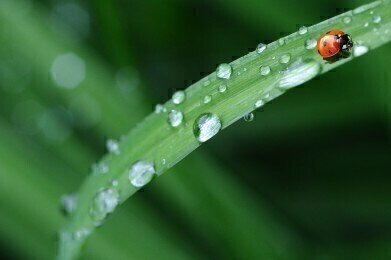Environmental Laboratory
Why Does Rain Smell?
Jul 31 2019
Have you ever noticed the sultry smell of summer rain? There’s something distinctive about a downpour or drizzle in the height of a hot spell that simply doesn’t exist in the wetter months. That’s because a unique combination of plant oils and soil bacteria are created during warmer weather, then released after the onset of rain, to produce a bouquet quite unlike any other.
The pleasant smell is known as petrichor and is created by a molecule contained in the soil called geosmin, which itself is a product of healthy soil bacteria. Petrichor has been identified as long ago as the 1960s, when the term was coined by a pair of Australian scientists, while geosmin is often harvested by scientists for use in antibiotic ingredients and by perfumiers for use in scent.
A history of petrichor
The term petrichor was first introduced by Australian researchers Joy Bear and Richard Thomas, who used it in their 1964 article Nature of Argillaceous Odour to describe the smell created by rainfall after a dry spell. It’s an amalgamation of two Greek terms: petros means “stone”, while ichor translates roughly as “the fluid that flows in the veins of the gods”.
Such a grandiose description is fitting for a smell that all animals can detect, but which humans are particularly sensitive to. But while the odour of geosmin is pleasing to human nostrils, it is often repugnant to the taste. Indeed, many people who detect it in mineral water or wine will reject the drink, leaving scientists at a loss as to why it is so favourable to one sense but so disagreeable to another.
Dry then wet
Petrichor is unusual in that it is not always present whenever rain falls. Indeed, it is most detectable only after long periods of hot, dry weather – such as that which afflicted Europe last summer – are ended by a sustained period of precipitation. This is because the natural oils contained in plants are encouraged during dry spells, leading to a magnified reaction with geosmin when the rain does arrive.
Tiny bubbles containing these oils and the geosmin are present on the Earth’s surface and when raindrops fall onto them, they are sent bouncing up into the air. They then burst and release the petrichor aerosols, scenting the air around them. If strong winds are also present, they can propel the smell over great distances, sometimes leading people to claim they can smell the rain coming.
Thunder, lightning and nitric oxide
A separate occasion on which the smell of rain can be detected is during intense thunderstorms. This is because the energy contained within lightning is strong enough to split oxygen and nitrogen particles to create nitric oxide. When the nitric oxide reacts with other contaminants in the air, it can form ozone, which has a far more chemically potent smell.
With the emissions from coal-fired power stations linked to extreme rainfall events, it’s clear that the longer we rely on this polluting fossil fuel, the more frequently these kinds of thunderstorms are going to occur. However, a transition to greener forms of energy generation could help to curb global warming and rescue the world’s climate before it’s too late.
Digital Edition
IET 34.2 March 2024
April 2024
Gas Detection - Biogas batch fermentation system for laboratory use with automatic gas analysis in real time Water/Wastewater - Upcycling sensors for sustainable nature management - Prist...
View all digital editions
Events
Apr 22 2024 Hannover, Germany
Apr 22 2024 Marrakech, Morroco
Apr 23 2024 Kuala Lumpur, Malaysia
Apr 23 2024 Kintex, South Korea
Apr 23 2024 Edmonton, AB, Canada


















